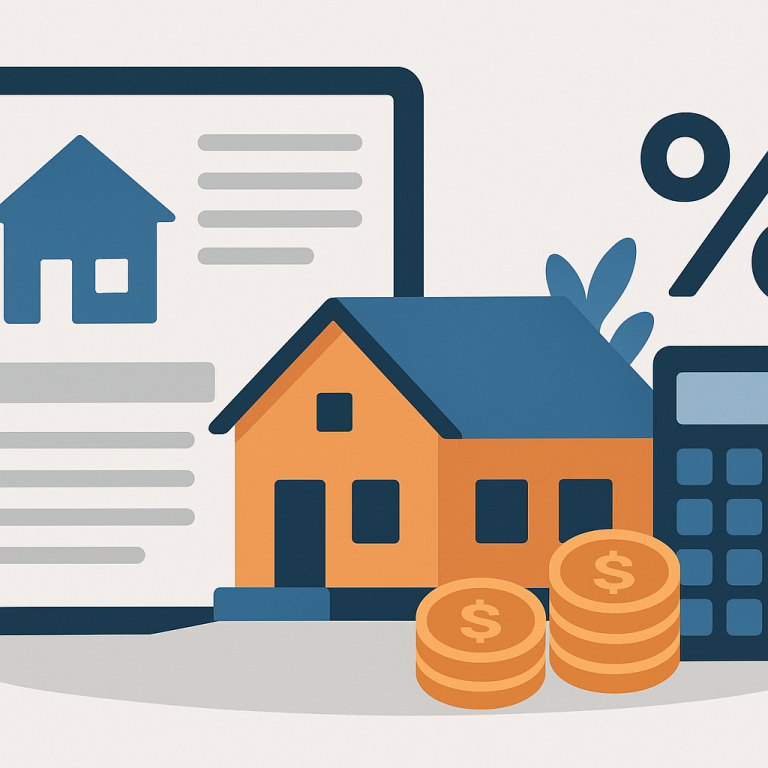Refinance guide divorce refinance removing an ex from the mortgage
Refinancing After Divorce: How to Remove an Ex from the Mortgage
When a marriage ends, separating financial ties is as important as dividing assets. For homeowners who want to keep the house, refinancing to remove an ex-spouse from the mortgage is a common solution. This article explains what that involves, when it makes sense, the pros and cons, expected costs, a step-by-step process, common pitfalls, and a short FAQ to answer typical homeowner questions.
What it Is and When It Makes Sense
Refinancing to remove an ex from the mortgage means replacing the existing loan with a new loan that lists only the spouse retaining the property as borrower. The lender pays off the original mortgage and issues a new loan in the sole name of the homeowner who will keep the house.
This approach makes sense when:
- The spouse who keeps the house can qualify for the mortgage on their own (income, credit, debt-to-income ratio).
- There is sufficient home equity or the homeowner can meet mortgage underwriting requirements without the other spouse’s income or credit.
- Both parties prefer not to sell the house and want to separate ongoing liability.
Benefits and Drawbacks
Benefits
- Removes the ex-spouse’s legal liability for the mortgage — they are no longer responsible for mortgage payments or default (once the lender releases liability).
- Improves the ex’s credit risk exposure; payments by the retained owner won’t affect the ex’s credit report.
- Clarifies financial responsibility and ownership after divorce.
Drawbacks
- The new borrower must qualify on their own; lower combined income can mean a higher interest rate or denial.
- Refinance costs (closing costs, appraisal, title fees) can be significant.
- Removing a co-borrower may eliminate a strong credit profile or income that previously secured favorable loan terms.
- If equity is low, the homeowner may face higher mortgage insurance or be unable to refinance.
Costs and Fees
Expect to pay typical refinance closing costs, which often range from 2% to 6% of the new loan amount. Key costs include:
- Appraisal fee: $300–$700 (varies by market).
- Origination fees and lender charges: 0.5%–1% of loan amount.
- Title search and insurance: several hundred dollars.
- Recording fees and transfer taxes: vary by jurisdiction.
- Credit report and underwriting fees: nominal but present.
- Attorney or settlement fees: if you use legal help for the refinance or to adjust the divorce agreement.
- Prepayment penalties: check the original mortgage for penalties if applicable.
Also budget for potential costs to update the deed (quitclaim deed and recording fees) and homeowner’s insurance name changes.
Step-by-Step Process
1. Review the current mortgage and divorce agreement
Confirm whether the divorce decree addresses mortgage responsibility and whether it requires creditor release. Remember: a court order does not change a lender’s loan contract — only the lender can remove liability.
2. Check eligibility and affordability
Assess credit scores, income documentation, employment history, debt-to-income ratio (DTI), and available equity. Use online mortgage calculators or speak to a mortgage professional to estimate qualifying ability.
3. Shop lenders and compare options
Get rate quotes and closing cost estimates from multiple lenders. Ask specifically about loan programs that allow assumptions (if you want to assume the existing loan) or conventional, FHA, VA options that might have different rules.
4. Apply for the refinance
Submit the full loan application with pay stubs, tax returns, bank statements, and any other requested documents. Be prepared for a credit check.
5. Appraisal and underwriting
The lender will order an appraisal to determine current home value. Underwriting will verify financials and title status.
6. Closing and recording
At closing you’ll sign the new mortgage documents. The lender pays off the old loan. Make sure the lender will record a release of liability and that the deed ownership matches your divorce agreement.
7. Update records
Record any deed changes, update homeowner’s insurance to remove the ex, and confirm the lender has released the ex from liability. Keep copies of all recorded documents.
Common Pitfalls to Avoid
- Assuming a quitclaim deed removes mortgage responsibility — it only changes ownership; the original loan remains unless the lender releases the co-borrower.
- Relying on a divorce decree to change the mortgage contract — lenders are not bound by divorce orders to remove a borrower.
- Underestimating closing costs and how they affect the decision to refinance versus selling.
- Failing to confirm lender requirements for assumptions or release of liability; some loans can’t be assumed or have strict conditions.
- Not checking for prepayment penalties on the current loan or being unaware of mortgage insurance requirements after refinance.
- Waiting too long to update title and insurance, which can create legal and claims issues later.
Short FAQ
Q: Does signing a quitclaim deed remove my ex from the mortgage?
A: No. A quitclaim deed transfers ownership interest but does not remove mortgage liability. The lender must release the co-borrower or you must refinance the loan to remove their obligation.
Q: Can my ex be forced to refinance?
A: No. A court can order property division or payment responsibilities, but it cannot compel a private lender to refinance. The refinancing spouse must qualify on their own or negotiate another solution (sale, assumption, buyout).
Q: What if I can’t qualify to refinance on my own?
A: Options include selling the home, convincing the ex to remain on the loan temporarily, seeking a loan assumption (if allowed), or negotiating financial support in the divorce settlement until you can qualify.
Q: Do VA or FHA loans allow removing a spouse from the mortgage?
A: Both have pathways but different rules. VA loans may allow release if the remaining spouse qualifies or if entitlement is substituted. FHA allows assumptions in some cases. Check with the loan servicer for specific requirements.
Removing an ex from a mortgage is often the cleanest way to separate financial responsibility after divorce, but it requires careful planning, lender approval, and an awareness of costs and legal limits. Start early, get professional advice, and confirm every step is documented and recorded.
META: divorce refinance removing an ex from the mortgage






